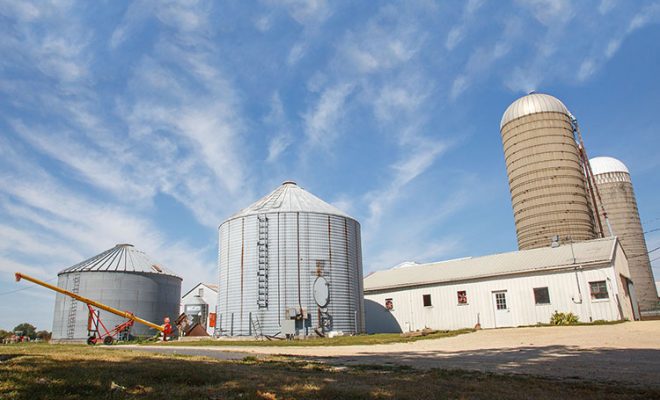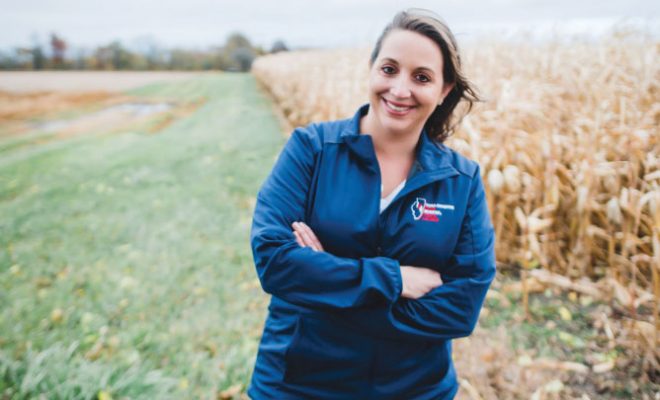If you yearn for a little burn in your food, take heart. Horseradish harvest has started in southwest Illinois.
“We grow corn, soybeans, wheat and horseradish,” says Barry McMillin, who farms in Madison, Monroe and St. Clair counties. “Horseradish is the smallest number of acres, but by far the largest amount of work, and it’s the best income producer.”
VIDEO: Illinois horseradish grower Barry McMillin talks about the crop, how it’s harvested, and some challenges to growing and harvesting it on his farm.
Collinsville, located mainly in Madison County, is home to the so-called “Horseradish House,” more formally known as the J.R. Kelly Company. It claims to be the largest supplier of horseradish in the United States, marketing up to 12 million pounds of Illinois-grown horseradish annually.
“The harvest starts at this time of year and proceeds through the winter,” says Dennis Diekemper, general manager of the company. “Too wet or frozen ground will shut us down through the winter and then we’ll pick it back up whenever the conditions are correct. We hopefully get done by the first part of May with the harvest.”
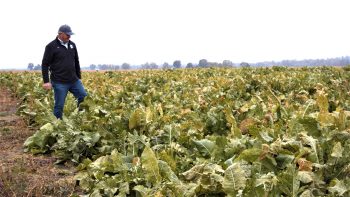
Similar to many other specialty crops grown in Illinois, growing horseradish proves to be labor-intensive. According to Diekemper, after it’s harvested, farmers that grow it for his company trim it, remove plant material and truck it to J.R. Kelly Company. The distributor then washes, cools and sells the roots across the country.
“We package it in 5-, 10- and 50-pound bags, shrink wrap it, whatever way the customer would like to have it,” he says.
See more: Farm Focus: Horseradish
Many farmers in the region have grown to rely on Alan Walters, Ph.D., a professor of vegetable science and breeding at Southern Illinois University-Carbondale (SIUC), for his horseradish research.
“Horseradish has been a part of Illinois agriculture for a long, long, long time, even before soybeans were here,” says Walters about the area near the Mississippi River in southwest Illinois. “It’s a perfect place to grow horseradish in the American bottoms. It can rain for two days and then within two days the soils are dry enough the horseradish growers can go in there and harvest.”
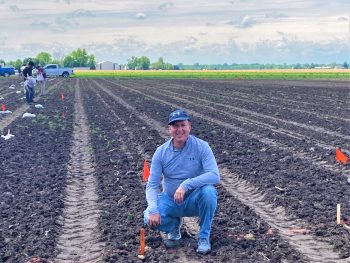
As with soybeans and pumpkins, Illinois can lay claim to growing more horseradish than anywhere else in the United States. That’s one reason Walters has devoted so much effort and research into the crop. He’s a big fan of its nutritional and health benefits.
“It has some of these pharmaceutical compounds in there that are good for preventing cancer,” says Walters. “You hear about brassicas, right, like broccoli is good for you? One tablespoon of horseradish has as many cancer-fighting compounds as does a bowl of broccoli.”
See more: Spice It Up with Illinois Horseradish Recipes
Largely used in cocktail sauce and as a condiment with prime rib, the three believe you should consider using it in other ways as well. Walters enjoys the ground root’s pungency and likes it in mashed potatoes and in soups for a “zing.” Diekemper likes it with potatoes too, as well as on hamburgers and bratwurst and in scrambled eggs.
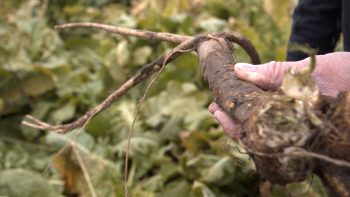
McMillin uses a simple method to reduce what some perceive as horseradish’s most overpowering attributes: “When you grind it in a food processor or blender, the cells are crushed so those oils are released and those pungent odors come out,” says McMillin. “So, you add white vinegar to stabilize the horseradish and contain the heat. But if you throw a couple of ice cubes in your processor, that absorbs all of the vapor that burns your eyes.”
While most horseradish harvested this year will go to food processors and produce retailers, McMillan and other Illinois horseradish growers will use part of it as “planting stock” to grow next year’s crop.
See more: Southwest Illinois: Horseradish Capital of America
Learn more in this edition of Illinois Farm Bureau’s Partners podcast. Horseradish farmer Barry McMillin, horseradish distributor Dennis Diekemper and horseradish researcher Alan Walters provide in-depth information about the herb, specifically its health attributes, how you can easily incorporate more into your diet, and more on why Illinois is our nation’s horseradish capital: bit.ly/ILBeneficialBurn


